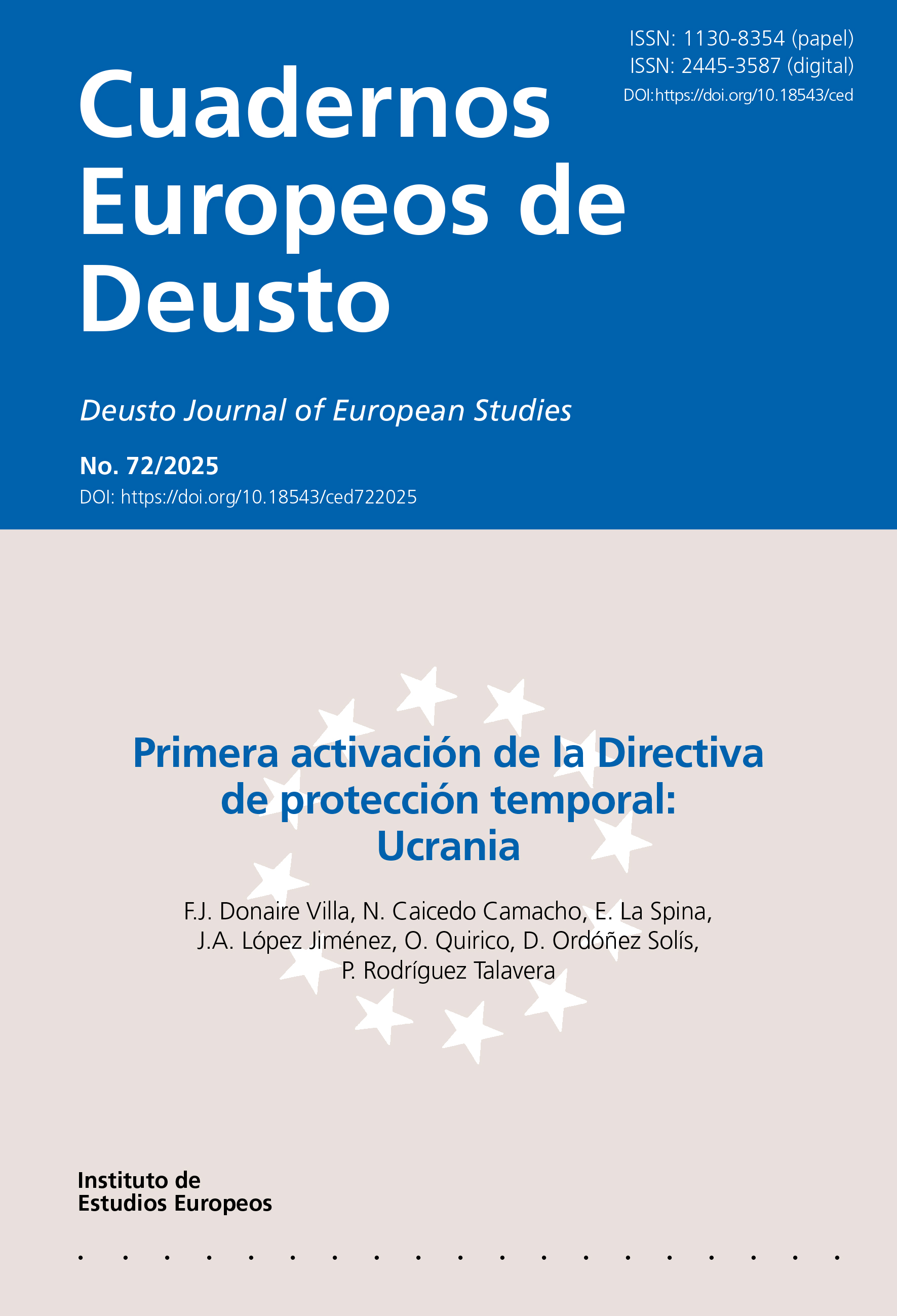Presentación «Primera activación de la Directiva de Protección Temporal: Ucrania»
Resumen
La invasión militar rusa de Ucrania desde febrero de 2022 ha provocado uno de los desplazamientos de población más rápidos y masivos en Europa desde la Segunda Guerra Mundial. En cuestión de pocas semanas, varios millones de personas se vieron obligadas a abandonar sus hogares, buscando refugio en países vecinos y en (otros) Estados miembros de la Unión Europea. Ante tal emergencia, tan pronto como el 4 de marzo de 2022, pero nada menos que veinte años después de la adopción del instrumento jurídico aplicado, la UE puso en marcha por vez primera la Directiva 2001/55/CE, relativa a la protección temporal de personas desplazadas en caso de afluencia masiva a los Estados miembros. Además, la rápida decisión se adoptó por unanimidad del Consejo (a propuesta de la Comisión), siendo así que según la propia Directiva basta la mayoría cualificada. La repentina llegada de millones de personas sobrepasó la capacidad de muchos Estados miembros, generando situaciones de saturación en centros de acogida y servicios sociales. Igualmente, surgió el reto de garantizar que todas las personas desplazadas recibieron un nivel de protección y asistencia equivalente, independientemente del país de acogida. El desplazamiento masivo de personas desde Ucrania hacia la UE ha dado lugar a una política de fronteras abiertas y de inmediata acogida y recepción de estas personas. Ahora bien, esta respuesta ha sumado componentes de asimetría en la política de Temporary Protection según quedó configurada en la antedicha Directiva, al dar paso a la coexistencia de procesos o tiempos diferenciados en razón de la heterogeneidad de posibles personas beneficiarias de procesos de acogida temporal dentro del territorio europeo. En el caso de Ucrania, esa misma respuesta de la Unión y de sus Estados miembros también ha tenido una nota de provisionalidad acaso imprevista cuando se activó el mecanismo, ante la ya prolongada duración del conflicto desencadenante. Los tres trabajos que se enmarcan en el núcleo temático del presente Número monográfico abordan aspectos básicos del marco regulador europeo de la protección temporal dispensada por la UE a las personas desplazadas de Ucrania, y de su implementación normativa y aplicativa, fundamentalmente en España. Se examina el Derecho originario de la Unión sobre la materia (en perspectiva además tanto diacrónica, cuanto sincrónica), así como su interpretación y aplicación por el Tribunal Justicia de la UE. E igualmente se analiza el Derecho derivado (la Directiva de Protección Temporal y otros textos jurídicos recientemente aprobados en el marco del Nuevo Pacto sobre Migración y Asilo). Dos de los estudios, asimismo, pasan revista a la normativa española de transposición de la Directiva de Protección Temporal, y a la Decisión del Consejo activando su aplicación. Y junto a la valoración jurídica, con el propósito de ilustrar su dimensión práctica, se toman en consideración aspectos cuantitativos y cualitativos de la aplicación efectiva del marco normativo estudiado: principalmente en España (incluido el reparto competencial interno entre Estado, Comunidades Autónomas y Entidades Locales, y su impacto sobre la praxis), pero también elementos de comparación con otros Estados miembros de la UE.
Descargas
El autor cede a la Universidad de Deusto los derechos de distribución, comunicación pública y reproducción del trabajo que somete a publicación en Cuadernos Europeos de Deusto (CED) en cualquier tipo de soporte, incluida la cesión para su inclusión en las bases de datos en las que esta revista está indexada y en el repositorio institucional de la Universidad de Deusto.
El acceso al contenido digital de cualquier número de Cuadernos Europeos de Deusto (CED) es gratuito, en régimen de open access. Los trabajos podrán leerse, descargarse, copiar y difundir, sin fines comerciales y según lo previsto por la ley inmediatamente después de la publicación de cada número.
Asimismo, los trabajos editados en Cuadernos Europeos de Deusto (CED) pueden ser publicados con posterioridad en otros medios o revistas, siempre que el autor indique con claridad y en la primera nota a pie de página que el trabajo se publicó por primera vez en CED, con indicación del número, año, páginas y DOI (si procede). Cualquier otro uso de su contenido en cualquier medio o formato, ahora conocido o desarrollado en el futuro, requiere el permiso previo por escrito del titular de los derechos de autor.
Aviso legal
Es responsabilidad exclusiva de los autores el contenido de sus respectivos trabajos publicados en esta Revista. Los autores asumen la responsabilidad de obtener todos los permisos necesarios para la reproducción en sus manuscritos de cualquier texto, material o ilustración, proveniente de otro autor, institución o publicación. Las consecuencias que puedan derivarse de denuncias por publicación de artículos plagiados serán responsabilidad exclusiva de los autores.


3.jpg)
2.jpg)
2.jpg)
2.jpg)
2.jpg)
2.jpg)







